Pitanga – an exotic fruit of Madeira
Pitanga Trees
The Pitanga Fruit ( Eugenia uniflora ) is originally from South America, mostly Brazil. However, it can be found today in Africa, in the Caribbean and on the Portuguese island of Madeira. The English name for Pitanga varies between: Brazil Cherry, Suriname Cherry, or Cayenne Cherry. Furthermore, it is only distantly related to the cherry botanically.
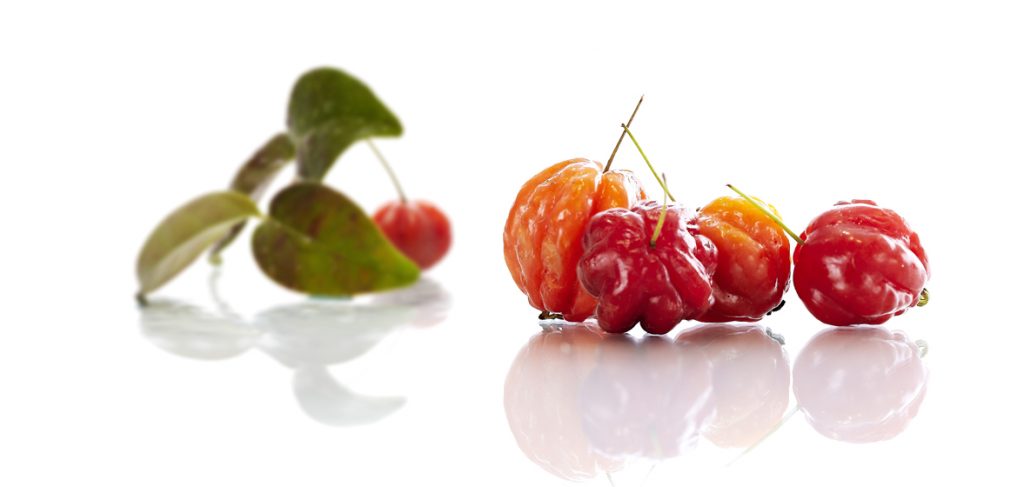
After succesful transplantation and due to their easy maintenance, Pitanga trees have grown on Madeira for many decades. They are found in private gardens as well as in farms. The fruit is very tasty and versatile. Madeirans appreciate the Pitangan fruit. Hence, they use it in their fruit salads, sherbets, pies, jams, ice creams, cakes, alcoholic beverages of all sorts, juices and mousses.
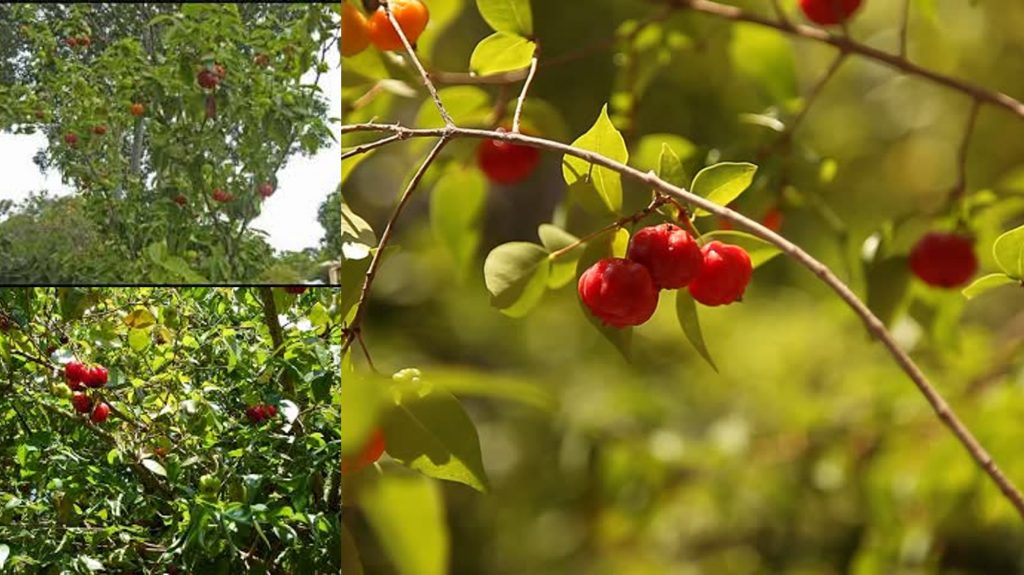
The Pitanga trees or pitangeuiras have very sturdy trunks. Locals thus use the wood to make tools handles and other wooden agricultural items. Thanks to Madeira’s mild climate and warm temperatures, Pitangueiras bear fruits all year round.
Pitanga Fruit
The fruit is cherry-like, deeply ribbed with 8 longitudinal grooves. They can be up to 3 or 4cm in diameter. They are light green to begin with, then mature from bright cherry red to almost black when ripe. They are aromatic, but flavour varies greatly and may be acid to excellent. Inside, there will be 1 to 3 hard seeds.
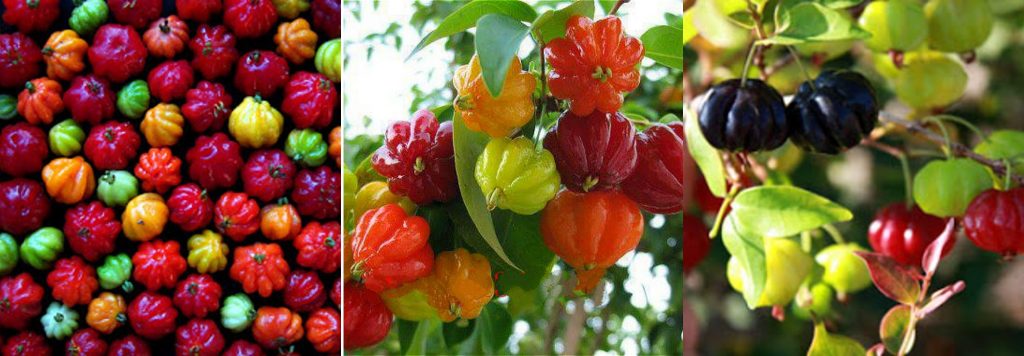
Pitanga fruits ripen at different rates on the tree. Only eat fruits which fall into your hand when touched. If you have to pull or twist, then it is not ripe just yet. The dark fruits tend to be sweeter whereas the red ones can be more ‘tangy’ and resinous.
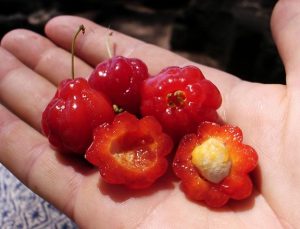
Ripe pitanga fruits are sweet with a mix of acidity. The juicy pulp contains 1 to 3 large non edible seeds. Interestingly, the fruits have a high level of acidity balanced by a high carbohydrate (sugar) count. The tartness can be similar to cranberries.
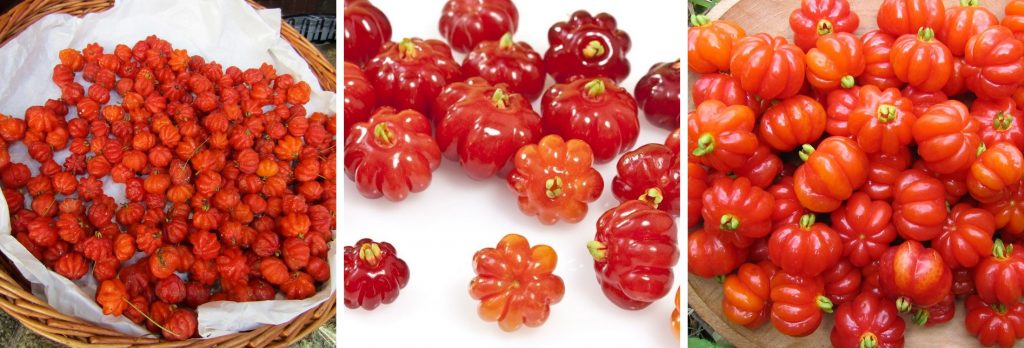
Pitanga fruits bruise easily and are hard to transport. In that respect, they are similar to raspberries for example.
Healing Properties
Reduces Blood Pressure
The fruits are used to reduce blood pressure (Source).
Improves Gastrointestinal Health
These fruits act as astringents that can dry up secretions. Hence, Pitanga fruits are used in the treatment of diarrhea and other gastrointestinal diseases. (Source) and (Source)
Rich in Antioxidants
Pitanga cherries are rich in antioxidants such as lycopene, beta-cryptoxanthin, gamma-carotene and rubixanthin. These guard the body agaisnt certain diseases and perform different beneficial health functions in the human body. Its antioxidant power also helps in slowing down the signs of early ageing. Furthermore, it aids in fighting against the actions of free radical in the body. (Source)
Influenza – Common Cold
The high vitamin C content of the Pitanga promotes the immune power which prevents colds. Pitanga enhances the resistance of the body against infections. Once made into a syrup, the Pitanga fruit is used to treat influenza (Source).

We already wrote about other fruits found on Madeira such as bananas, passion fruits, grape varieties, annona cherimola and sugar cane.